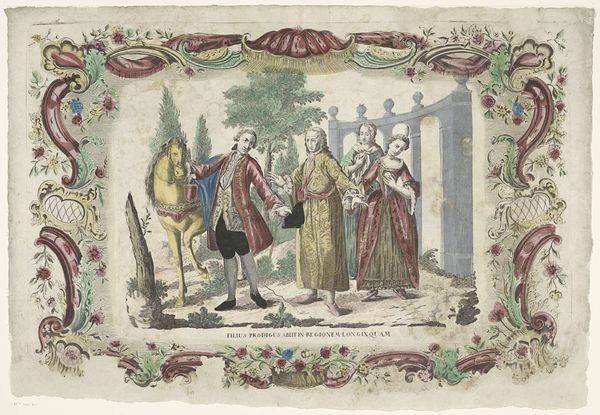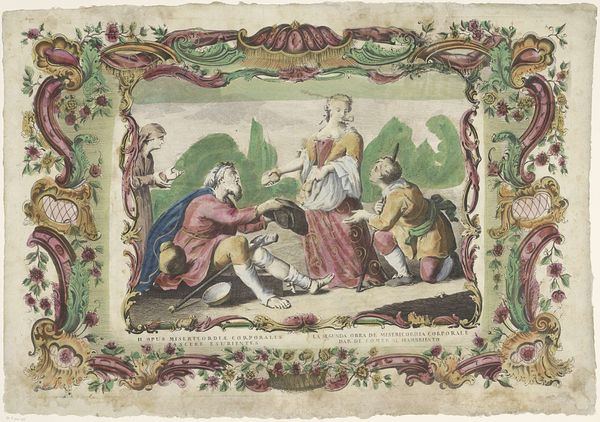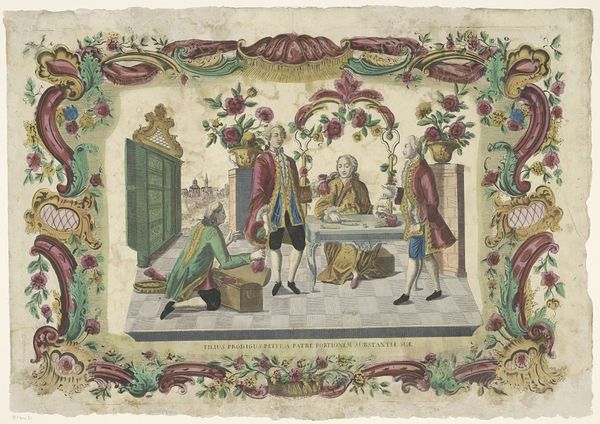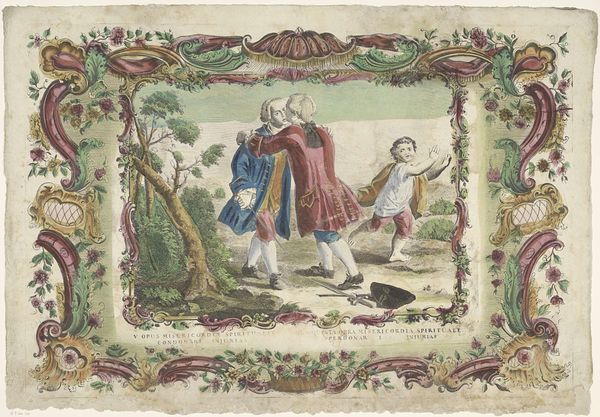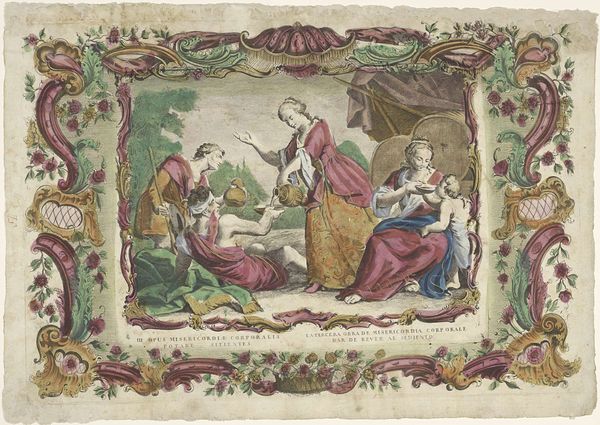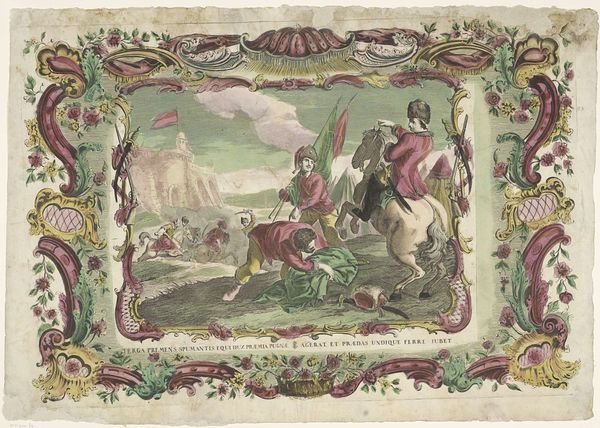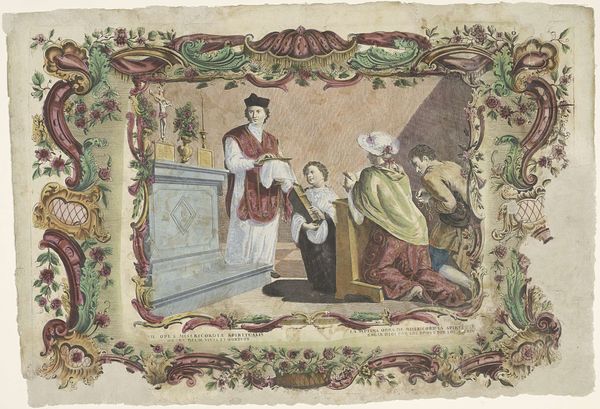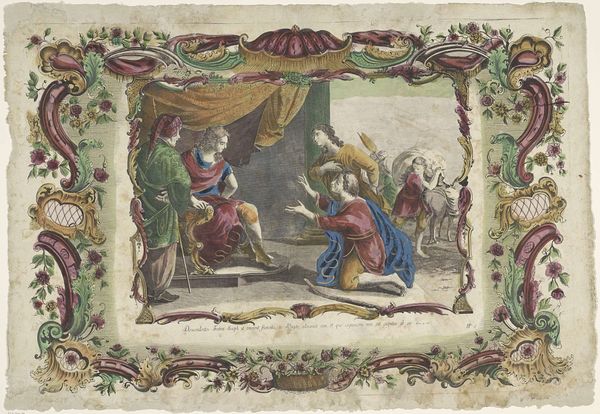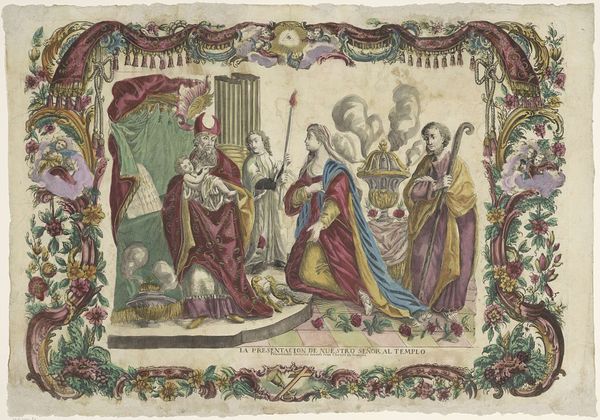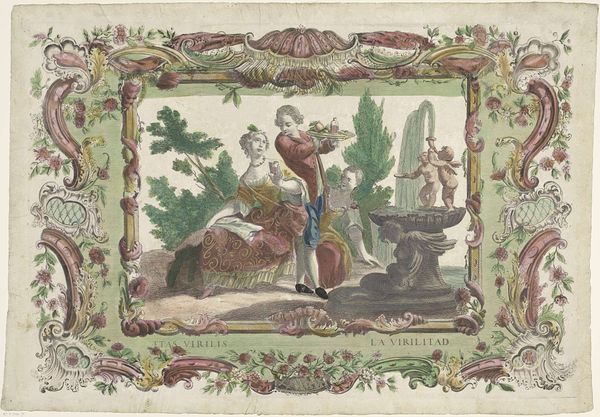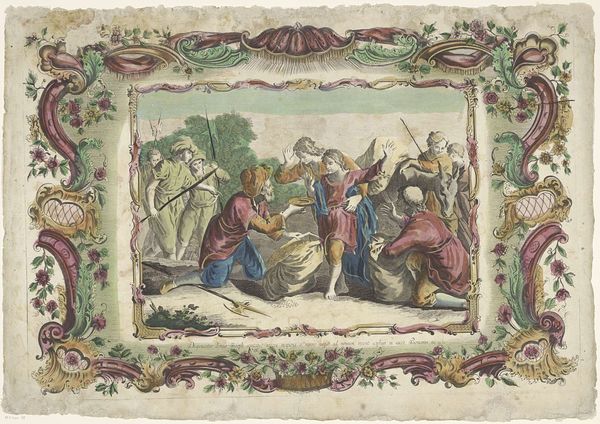
print, etching, watercolor
#
water colours
#
narrative-art
#
baroque
# print
#
etching
#
landscape
#
figuration
#
watercolor
#
coloured pencil
#
watercolour illustration
#
watercolor
Dimensions: height 525 mm, width 770 mm
Copyright: Rijks Museum: Open Domain
Editor: This etching, "The Return of the Prodigal Son" by Giovanni Volpato, dates to the 18th century and makes extensive use of watercolours. The floral border almost looks like a stage, framing a very tender scene. What strikes me most is the clear, almost theatrical presentation of emotion. How do you interpret this work? Curator: The composition absolutely evokes a stage, doesn’t it? Consider the biblical parable itself: the prodigal son's return is a powerful, universal symbol of repentance, forgiveness, and the enduring nature of familial love. The father's embrace transcends mere acceptance; it's a symbolic rebirth for the son. Editor: I see the forgiveness, but I'm also interested in what isn’t shown. What does the artist convey with the figures in the background? Curator: Good question. The figures standing by could symbolize societal judgment or perhaps the wider family's perspective on this return. Their composed stances create a poignant contrast to the passionate embrace, suggesting complex undercurrents. Does this give you new insight? Editor: It does. The figures aren't just passive observers; they're a reminder that reconciliation often involves navigating social complexities. What about the elaborate floral border? Is that purely decorative? Curator: Not entirely. Consider the transience of flowers; they can also be symbols of fragility and the fleeting nature of life and repentance. Framing the central narrative with this reinforces the preciousness and delicate balance of forgiveness. The symbolism enriches our understanding of emotional experiences. Editor: So, the print is using those recognizable Baroque conventions and idioms as visual shorthand for its audience? Curator: Precisely! By employing these known symbolic languages, the artist is in effect participating in cultural continuity and reinterpreting an old narrative. A cultural feedback loop. Editor: It's fascinating to see how visual symbols add layers of meaning. It makes you wonder what future generations will read into these symbols, generations from now.
Comments
No comments
Be the first to comment and join the conversation on the ultimate creative platform.
